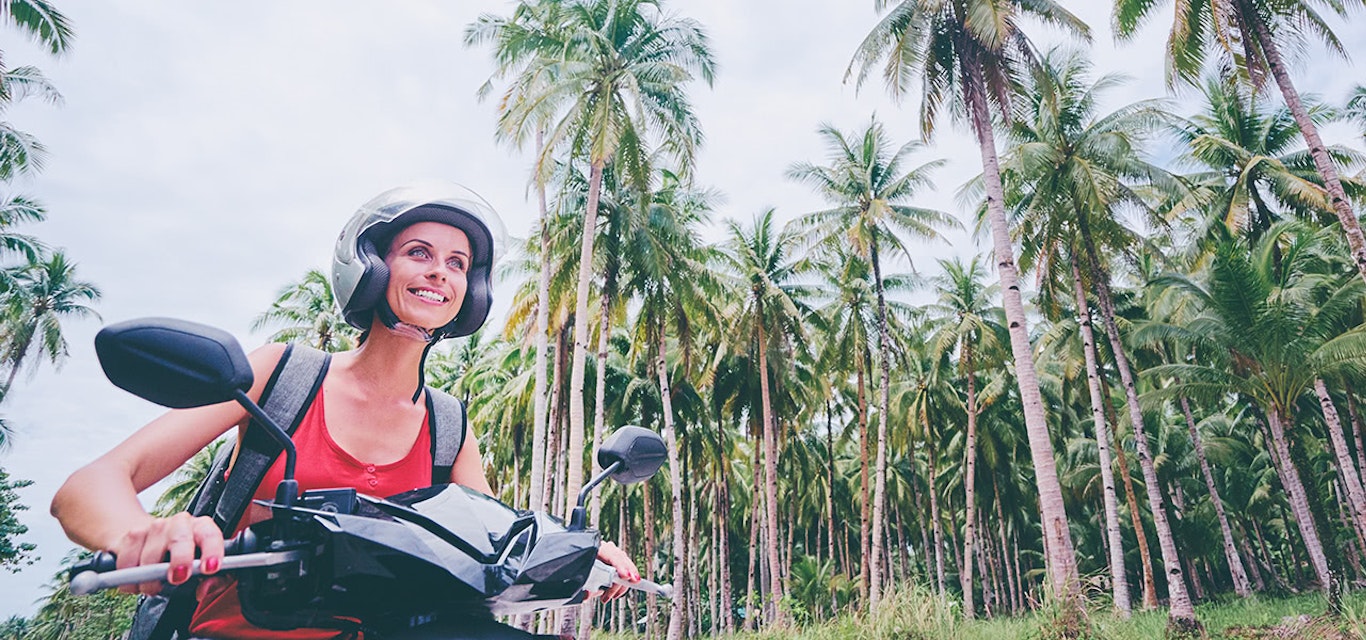Seven tips for hitting the road in Bali
Heading to Bali? Here are some tips if you’re experiencing the island on two wheels.
The sandy beaches and hinterland of Bali are simply gorgeous. One of the best ways to see the sights is by motorcycling. It’s a great way to experience the views, sounds and aromas of this tropical island.
With the freedom of two wheels you can remove yourself from the busy resort centres. Travel to the south coast and the terraced rice paddies of the hills. Or further afield to the more secluded seaside retreats up north.
But, to say there’s a difference in riding conditions between Australia and Bali would be considered a massive understatement.
Here are a few things to think about before you saddle up.
1. They’re very easy to hire.
I hired a motorbike from a rental company catalogue at my hotel. Within 15 minutes, a 110cc Honda Vario was delivered to reception.
The cost was around AUD$9 a day. This included insurance. Although it sported a number of battle scars it proved to be a reliable little unit.
2. But that doesn’t necessarily mean you’re legally able to drive them.
At no point during the hiring process was I asked to show a licence. To ride legally in Bali you must carry an International Driving Permit (IDP) endorsed for motorcycles. You’ll also need your state licence. Otherwise you’ll need to get a local Indonesian licence.
Be sure the hire company gives you the rego papers. These can be requested if you’re stopped by police.
3. There’s a fair chance you’ll be stopped by police.
Whenever I took the main road from Seminyak to Denpasar I was pulled over at a police checkpoint. The whole encounter only took a minute and was very civil. Once my IDP was checked I was on my way.
The police look out for riders and pillions passengers not wearing helmets.
4. Everything you've heard about Balinese traffic is true.
Around the main centres, traffic jams are as common as Bintang tank-tops. The mass of motorbikes seems to flow like a river as riders try to make their way to the front. They’ll even spill onto the footpath to find a way out of the gridlock.
Despite the apparent chaos, the more time you spend on the road, the more you notice a semblance of order. There’s a politeness, and a willingness to let traffic in. Which is much appreciated when you’re learning the local conditions.
5. You will get (temporarily) lost.
Bali’s roads are bewildering, and once you leave the main drag it’s a challenge to find reliable sign posts. Travelling from A to B in Kuta, Legian and Seminyak can involve a route that seems to run in circles. Sometimes it’s just quicker to walk.
The best piece of navigational equipment you can carry is a pillion. One who’s prepared to keep an eye on the GPS and alert you to everything you missed. They’ll probably sing out a lot.
6. Buy a raincoat/poncho.
On a ride to Ubud, my wife convinced me to pull over to buy a two-person rain poncho. The weather was warm and clear. I figured we were spending perfectly good satay money.
On the way back, we were hit by a biblical rain storm. We quickly donned our wisely-purchased poncho and arrived at the satay stand almost completely dry.
7. Check your travel insurance.
Be sure to check your travel insurance policy and coverage before you travel. Have a good look at the Product Disclosure Statement before you sign up.
This will inform you on licensing and if any other conditions apply. For example; engine capacity limitations or rider age limits. Some companies don’t cover motorcycling unless a higher premium is paid.
---
Originally posted by John Pedler RAA.
